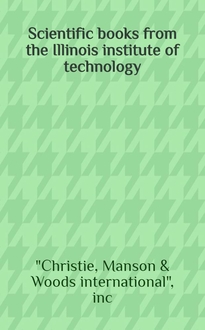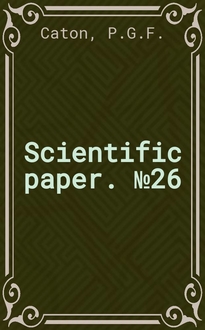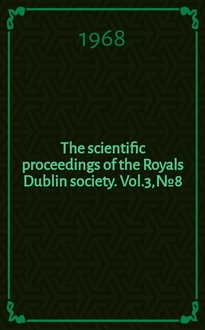Origami Bloom Patterns Explained | Future of Space Tech | Science Sizzle
0:00 – Introduction: Nature's blooming & origami connection 0:40 – The engineering challenge: Folding big structures small 1:35 ...
ScienceSizzle
Treating Traces of Trauma, Why Your Shoes Are Untied, and More: 60 Second Science Podcasts
Listen and learn about the way researchers have treated early-life trauma over the course of a mouse's life, how the formation of ...
Scientific American
We wouldn't have potatoes without tomatoes
Millions of years ago, two plants crossbred and created the ancestor of the modern-day potato. But for the longest time, this ...
Scientific American
Your brain is glowing and scientists don't know why
Scientists just measured this glow from outside the skull for the first time—and it seems to change when you're thinking or focusing ...
Scientific American
How to Fight Bird Flu If It Becomes the Next Human Pandemic (Part 3)
Creating a bird flu vaccine requires several layers of bioprotective clothing and typically a whole lot of eggs. H5N1 avian influenza ...
Scientific American
How scientists are planning for the possibility of a bird flu pandemic
There have been at least 70 confirmed human bird flu cases in the U.S. While most of these cases have been traced back to ...
Scientific American
Why Dungeons and Dragons is good for your brain
From building confidence to processing trauma, tabletop role-playing games like Dungeons & Dragons are proving to be powerful ...
Scientific American
This Surgery Can Lead to Weight Loss—But Stigma Is Harder to Shake Off
Each year more than half a million people undergo bariatric surgery, a procedure geared toward weight loss. But research shows ...
Scientific American
What is Scientific American?
Every story is a science story. Please visit our website to discover the latest advances in science and technology: ...
Scientific American
Mitochondria aren’t just the powerhouse anymore
Mitochondria are the powerhouse of the cell—it's a phrase Scientific American coined way back in 1957 that makes it into science ...
Scientific American
CDC Vaccine Panel Fired by RFK, Jr., Oceans Grow More Acidic, and Pangolins Threatened by Hunting
Robert F. Kennedy, Jr., has fired the experts on the Centers for Disease Control and Prevention's vaccine advisory panel, sparking ...
Scientific American
4 nonfiction books Scientific American recommended In June
Scientific American reads— a lot. These are four of our recommendations from June, from slithering snakes to a river's impact.
Scientific American
Quantum Entanglement : The Movie - by Scientific American
SUBSCRIBE to our channel: http://goo.gl/aLpxX PART TWO is here: http://goo.gl/Lai6G __ Quantum-entangled twins or hoaxsters ...
Scientific American
Doctors discover new blood type and only one person has it
Most people know their blood type as A, B, AB or O, and whether they're “” or “negative.” But those are just 2 of 48 recognized ...
Scientific American
Dinner with King Tut Explores the Wild World of Experimental Archaeology
Science writer Sam Kean joins Science Quickly to explore the hands-on world of experimental archaeology—where researchers ...
Scientific American
Being cut off from other humans changes your brain. Here's the science on how.
Over the past few months, the phrase “social distancing” has entered our lexicon. Many of us have found ourselves separated ...
Scientific American
Is AI Conscious? Claude 4 Raises the Question
Host Rachel Feltman talks with Deni Ellis Béchard, Scientific American's senior tech reporter, about his recent exchange with ...
Scientific American
Could Mitochondria Be Rewriting the Rules of Biology?
Mitochondria are known as the powerhouses of the cell—but new research suggests they might be far more complex. Columbia ...
Scientific American
Going Outside Can Change Our Hormones and Improve Microbiome Diversity
Going outside has many benefits, from regulating our nervous system to diversifying our microbiome. But you don't need a forest ...
Scientific American
SPACE LAB: A Surprising Thing Happens When Two Black Holes Slam Together
What is the "chirp"? And why is it important to astronomers? Some of the most violent cosmic collisions in the universe occur ...
Scientific American
What is Sickle Cell Disease? And Can Science Cure it?
You have around 35 trillion red blood cells moving around your body at all times. Typically they are rounded and flexible.
Scientific American
Asthma Preventing Microbes, Pollinator Plant Preference, and More: 60 Second Science Podcasts
Listen and learn about the microbes that may lower children's risk of having asthma, why an early flower bloom might be a sign of ...
Scientific American
Why Do We Sleep? - Instant Egghead #55
We spend nearly a third of our lives asleep, but scientists don't agree on sleep's purpose. Scientific American contributor Joss ...
Scientific American
What Everyone Gets Wrong about Colonoscopies
Colonoscopy gets a bad rap, but how much of what you've heard is actually true? In recognition of Colorectal Cancer Awareness ...
Scientific American
Why insects are attracted to light
Contrary to popular belief, insects don't fly to lights at night because they mistake light for the moon or because they are attracted ...
Scientific American
Mysterious sea star disease finally identified
A mysterious illness has killed billions of sea stars in the past decade. But after a long search, scientists have finally found the ...
Scientific American
Researchers report “climate of fear” in U.S. science
Nearly 2000 of the nation's leading scientists have signed an open letter denouncing the Trump administration's attack on science ...
Scientific American
Russia’s Earthquake, Wonders of Walking and Surprising Plant Genetics
Host Rachel Feltman talks with Andrea Thompson, Scientific American's senior sustainability editor, to discuss the massive ...
Scientific American
How Are Prenatal Blood Tests Detecting Cancer?
Noninvasive prenatal blood testing, or NIPT, is a routine screening that is offered during pregnancy and looks for placental DNA to ...
Scientific American
Rejecting Toxic Fitness Culture with Casey Johnston
Casey Johnston is not your typical health and fitness influencer. She joins host Rachel Feltman to discuss how finding joy in ...
Scientific American
Must Be Microplastics on the Brain
Not much passes into our brain from the rest of our body, to the chagrin of drug makers everywhere. So it should be cause for ...
Scientific American
Scientific American Goes (Very) Woke #shorts
Michael M Vlog
Why fruit looks better in nets
Fruits and vegetables wrapped in a colorful net appear riper and more appetizing. This is caused by a perceptual phenomenon ...
Scientific American
Our Fear and Fascination around Snakes
When writer Stephen S. Hall was a child, he would capture snakes—much to his mother's chagrin. Now the science journalist is ...
Scientific American
Genes vs. DNA vs. Chromosomes - Instant Egghead #19
Scientific American editor Eric R. Olson untangles the relationship between the most fundamental components of our biology.
Scientific American
Scientific American medical illustration
Annie Campbell
I’m making videos for Scientific American!!! @scientificamerican
Tom Lum
The Power of Periods | A Question of Sex, Episode 4
Science knows shockingly little about menstrual health. But now, endometriosis patients are changing that. It's estimated that ...
Scientific American
Scientific American: As Trump Touts Dangerous Cures, Here’s What We Know About COVID-19 Drug Tests
President Trump dangerously suggested injecting disinfectants could help patients sick with the coronavirus, then said he was ...
Democracy Now!
The lab under Greenland's ice sheet
Thousands of meters below Greenland's ice sheet, there is a treasure trove of climate history records. To uncover this archive, ...
Scientific American
Neuroscience Meets Magic - by Scientific American
SUBSCRIBE to our channel: http://goo.gl/aLpxX --- Brain scientists Stephen Macknik and Susana Martinez-Conde explain the ...
Scientific American
Scientific American: Psychology - Christina, In Her Own Words, Video Profile
From: Chapter 2, Biology and Behavior.
Macmillan Learning


























































